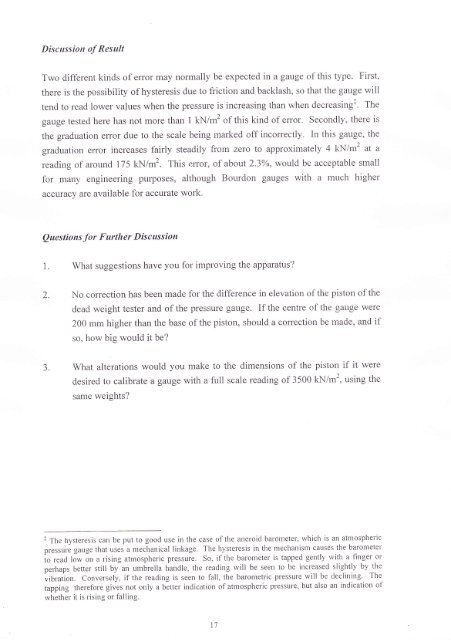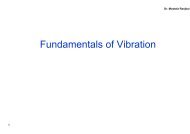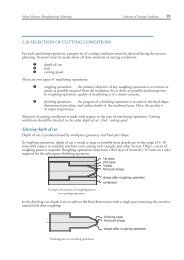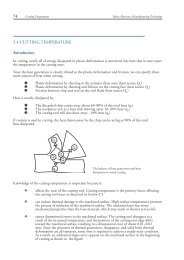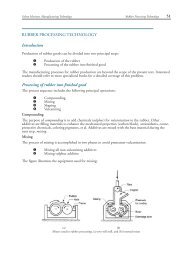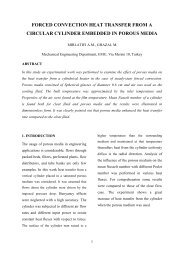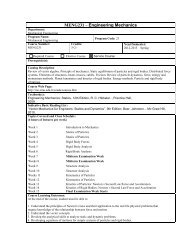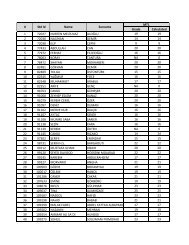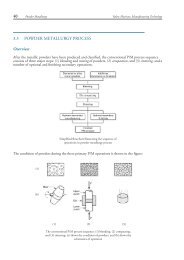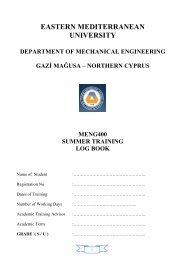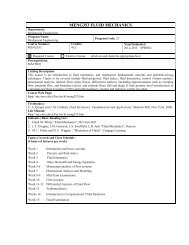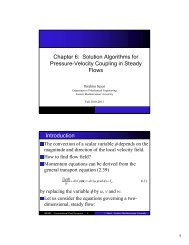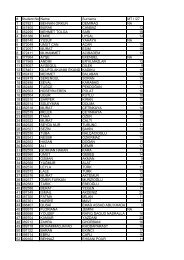3. CALIBRATION OF A PRESSIJRE GATJGE Introduction head, this ...
3. CALIBRATION OF A PRESSIJRE GATJGE Introduction head, this ...
3. CALIBRATION OF A PRESSIJRE GATJGE Introduction head, this ...
You also want an ePaper? Increase the reach of your titles
YUMPU automatically turns print PDFs into web optimized ePapers that Google loves.
Discr.rssion of Result<br />
Two different kinds of eror may nonnally be expected in a gauge of <strong>this</strong> type. First,<br />
there is the possibility of hysteresis due to friction and backlash, so that the gauge will<br />
tend to read lower values when the pressule is increasing than when decreasingl'. Th.<br />
gauge tested here has not more than 1 kN/rn2 of <strong>this</strong> kind of error. Secoridly, there is<br />
the graduation eror due to the scale being malked off incorrectly. In <strong>this</strong> gauge, the<br />
graduation error increases fairly steadily fi'om zero to approximately 4 kNim2 at a<br />
reading of around 175 kNim2. This error, of about 2.3o , would be acceptable srnall<br />
fo1 many engineering pulposes, although Bourdon gaLlges with a much higher<br />
accuracy are available for accurate work.<br />
Questions for Further Discussion<br />
t. What suggestions have you for improving the appalatus?<br />
2.<br />
No correction has been made for the difference in elevation of the piston of the<br />
dead weight tester and of the pressure gallge. If the centre of the gallge were<br />
200 mm higher than the base of the piston, should a colrection be made, and if<br />
so, how big would it be?<br />
<strong>3.</strong> What alterations would you make to the dimensions of the piston if it wele<br />
desired to calibrate a gauge with a fr-rll scale reading of 3500 kN/m2, using the<br />
same weights?<br />
i The hysteresis can be put to good use ir.r the case of the arieroid barometer, which is atl att.uospllelic<br />
pr.rrur. gauge that uses a r.uechanical linkage. Tlie hysteresis in the mechanislll callses the barouretet'<br />
io r.acl low on a rising atmospheric pressure. So, if the baroureter is tapped gently with a firlger or<br />
perhaps better still by au ur.ublella handle, the reacling will be seell to be incteased slightly by the<br />
vibraiion. Conversely, if tlie reading is seen to fall, the barometric pressure will be declining. The<br />
tappilg therefore gives not only a better indication of atr-nosphet'ic pressul'e, but also an indication of<br />
whether it is rising or falling.<br />
t7


